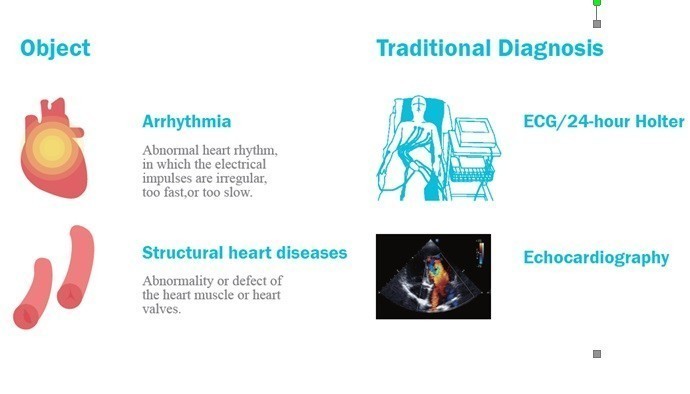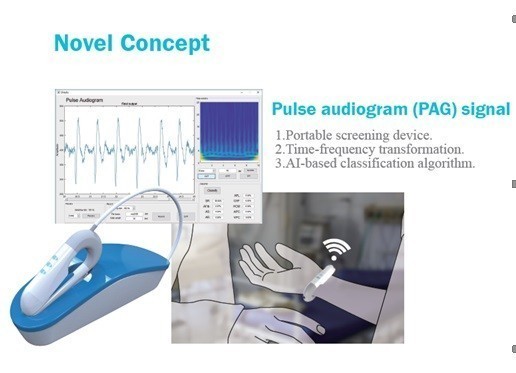| Technical Name | Development of an AI-based Arrhythmia and Structural Heart Disease Classification Algorithm based on Pulse AudioGram | ||
|---|---|---|---|
| Project Operator | National Cheng Kung University | ||
| Summary | An artificial intelligence-based (AI-based) non-invasive Pulse AudioGram (PAG) monitoring device with arrhythmia screening algorithm has been developed in this research. |
||
| Scientific Breakthrough | An artificial intelligence-based (AI-based) non-invasive Pulse AudioGram (PAG) monitoring device with arrhythmia screening algorithm has been developed in this research. The PAG monitoring device consists of four components, including an audiogram sensor, an analog-digital converter, a microprocessor and a data storage. The main function of the proposed AI-based non-invasive PAG is to measure the audio-signal in radial artery which is generated by haemodynamics. Haemodynamics under arrhythmia condition and sinus rhythm (SR) condition may exhibits different patterns since the heart rhythms are irregular under arrhythmia condition. PAG signal of SR and other arrhythmia symptoms such as atrial fibrillation (Af), aortic regurgitation (AR), and congestive heart failure (CHF) were collected in this research. An AI-based arrhythmia detection algorithm was also developed in our research, which consists of a signal pre-processing process, a windowing process, a feature transform process, and an AI-based classification process. In the signal pre-processing process, a Chebyshev low-pass filter with cut-off frequency (200 Hz) is utilized. In the windowing process, the PAG signal is divided into 5/10/15/30 second consecutive time windows. In the feature transform process, the time-domain PAG signal is transformed into time-frequency spectrum (represents as figures) using the continuous wavelet transform (CWT). The difference between SR, Af, AR, CHF can be obviously enhanced with the help of time-frequency transformation. Finally, a convolutional neural network (CNN) classifier is adopted as the AI-based classification process in the proposed algorithm. In the experiment results, the proposed method can achieve accuracy of 97.8% when discriminating SR and Af; the proposed method can achieve accuracy of 87.33% when discriminating SR, Af, AR, and CHF. In this study, we’ve successfully developed an AI-based non-invasive pulse audiogram (PAG) monitoring device for arrhythmia screening, and have plan to use it in large-scale screening for arrhythmia in the near future. |
||
| Industrial Applicability | 1.應用於居家篩檢 |
||
other people also saw







